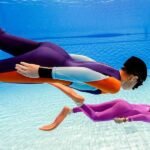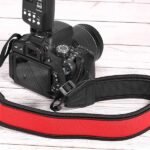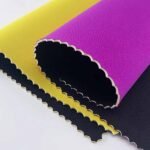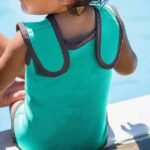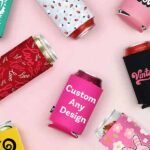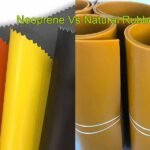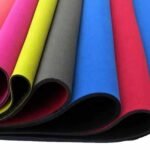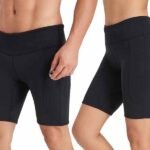When it comes to keeping beverages cold and hands dry, the humble koozie has become an indispensable accessory at events, on job sites, and around the home. But not all koozies are created equal. The best neoprene koozie expertly balances insulation, durability, and branding potential—so you stay refreshed while your logo stays front and center.
The best neoprene koozie combines at least 3 mm of closed-cell neoprene for top thermal resistance, reinforced zigzag seams for durability, and high-definition sublimation printing so your brand pops. This blend of material, construction, and customization delivers maximum cold retention, long-term wear, and vibrant graphics on every piece.
Imagine you’re at a summer festival. Your hand reaches for a cold can wrapped in a sleek, branded sleeve that still feels icy—no condensation, no sweat. That first chilly touch, coupled with a jaw-dropping logo print, makes you a lifelong fan. Stay with us as we unpack the science, design, and customization secrets behind the ultimate neoprene koozie—and show you how to get yours made in days, not weeks.
What Defines the Best Neoprene Koozie and How Does It Work?

The best neoprene koozie uses closed-cell neoprene to trap a thin layer of air against your drink, minimizing heat transfer. High-density foam (≥0.055 g/cm³) and tight seam construction lock in cold, while moisture-wicking outer fabric keeps hands dry. Together, these elements ensure long-lasting insulation and a comfortable grip.
Neoprene’s insulating power comes from its closed-cell foam structure. Millions of tiny air pockets interrupt heat transfer by conduction, convection, and radiation. When you slide a can or bottle into a koozie made with closed-cell neoprene, you’re essentially adding an insulating blanket around the beverage.
- Thermal Conductivity: Standard closed-cell neoprene has a thermal conductivity (k-value) of roughly 0.054 W/m·K. That’s about one-tenth the conductivity of aluminum cans, which means heat from your warm hand or the outside air is significantly slowed down.
- Material Density: A density of 0.055–0.070 g/cm³ strikes the balance between insulation and flexibility. Lower densities feel flimsy; higher densities become too rigid to slip on easily.
- Moisture Barrier: Closed cells prevent water absorption. Even after hours on a damp table, the neoprene doesn’t saturate, so performance stays consistent.
| Property | Typical Value | Benefit |
|---|---|---|
| Thermal Conductivity | 0.052–0.060 W/m·K | Superior cold retention |
| Density | 0.055–0.070 g/cm³ | Flexible yet sturdy |
| Water Absorption | <1 % | No soggy, degraded foam |
| Thickness (standard) | 2–5 mm | Tailor insulation vs. bulk |
Moreover, grip-friendly fabrics—like nylon or polyester laminates—add a soft-touch finish that resists slippage. The best neoprene koozie isn’t just a thermal device; it’s an ergonomic product designed for real-world use.
Which Neoprene Grades and Thicknesses Create the Best Neoprene Koozie Insulation?

Premium koozies use 3–5 mm closed-cell neoprene in grades ranging from SBR-blend to high-density CR (chloroprene rubber). 3 mm balances portability and performance; 5 mm maximizes chill retention. Higher-density CR formulations boost insulation by 10–15 % over basic SBR-blend foams.
Not all neoprene is identical. Manufacturers offer multiple formulations and densities:
SBR-Blend Neoprene (~0.055 g/cm³):
- Pros: Cost-effective, lightweight, easily laminated.
- Cons: Moderate thermal resistance; best for indoor or short-duration use.
High-Density CR Neoprene (~0.065 g/cm³):
- Pros: 10–15 % better insulation, excellent durability.
- Cons: Slightly heavier, higher material cost.
Eco-Neoprene (Limestone-Based):
- Pros: Lower carbon footprint, similar performance to high-density CR.
- Cons: Limited color range, slightly stiffer.
| Grade | Density (g/cm³) | Thermal Resistance (R-value) | Cost Factor |
|---|---|---|---|
| SBR-Blend | 0.050–0.057 | 0.18 m²·K/W | 1× |
| CR-Blend (High-Density) | 0.060–0.070 | 0.21 m²·K/W | 1.2× |
| Eco-Neoprene | 0.058–0.066 | 0.20 m²·K/W | 1.3× |
Thickness Trade-Offs:
- 2 mm: Ultra-light and slim (ideal for slim cans), but insulation drops by ~20 %.
- 3 mm: Goldilocks zone—portable yet effective for 2–3 hour events.
- 5 mm+: Maximum cold retention (up to 4 hours), but bulkier and heavier.
When sourcing the best neoprene koozie, specify both grade and thickness up front. This ensures you hit your target performance range without surprises.
How Does Custom Printing Elevate the Best Neoprene Koozie’s Branding?

Custom printing—especially dye-sublimation—turns neoprene koozies into walking billboards. Sublimation penetrates fabric, offering photo-realistic colors that resist cracking or peeling. Bulk print runs (MOQ 200+) average $1.50–$2.50 per unit, depending on design complexity and color count.
A neoprene koozie is more than insulation; it’s prime promotional real estate. Four main printing methods dominate:
Screen Printing:
- Cost: $0.80–$1.20 per color per unit (MOQ 500+).
- Look: Bold, solid colors; limited to 4–6 colors.
- Durability: Excellent adhesion; slight hand feel.
Dye-Sublimation:
- Cost: $1.50–$2.50 per unit (full-color, MOQ 200+).
- Look: Photo-realistic, seamless edge-to-edge coverage.
- Durability: Ink bonds with fabric fiber; no cracking or fade.
Heat Transfer Vinyl (HTV):
- Cost: $1.20–$1.80 per unit (MOQ 300+).
- Look: Matte or glossy decals; limited intricacy.
- Durability: Moderate; edges may lift over time.
Embossing / Debossing:
- Cost: $2.00–$3.00 per unit (MOQ 500+).
- Look: 3D tactile effect; premium feel without color.
- Durability: Permanent, but no color contrast.
| Method | MOQ | Cost/Unit | Color Capability | Durability |
|---|---|---|---|---|
| Screen Printing | 500+ | $0.80–1.20 | 1–6 colors | Very High |
| Dye-Sublimation | 200+ | $1.50–2.50 | Full-color | Excellent |
| HTV | 300+ | $1.20–1.80 | Solid colors | Medium |
| Emboss/Deboss | 500+ | $2.00–3.00 | Texture only | Very High |
High-resolution full-bleed designs look stunning on the soft neoprene surface. For logos, ensure a transparent PNG asset at 300 DPI. When ordering the best neoprene koozie, ask your factory partner about color-matching (PMS codes) and pre-production digital proofs to lock in perfect brand consistency.
What Design Features Are Essential for the Best Neoprene Koozie?
Top-rated koozies feature blind-stitch seams to prevent water seepage, slip-resistant bottoms to avoid sliding, contoured shapes for ergonomic grip, and optional handle or strap attachments. All contribute to durability, user comfort, and functionality in real-world settings.
Beyond material and print, subtle design choices elevate a good koozie to the best neoprene koozie:
Seam Type:
- Blind-Stitch (Flatlock): Stitched outside cell edges for waterproofing and a smooth interior.
- Zigzag Overlock: Faster and cheaper but can allow slight water ingress at high pressure.
Base Design:
- Standard Flat Bottom: Good stability on tables.
- Recessed Bottom Insert: Optional EVA or corrugated insert adds rigidity.
Ergonomics & Shape:
- Contour Shape: Slight hourglass form fits hand comfortably and conforms to cans/bottles.
- Universal Sleeve: Straight cylinder works across multiple vessel types.
Handles & Straps:
- Loop Handle: Easy carry for 20 oz tumblers.
- Detachable Strap: Converts to crossbody carrier—great for outdoor events.
Accessory Pockets:
- Mini Mesh Pocket: Holds a bottle opener or ID card.
- Zip Pouch: Keeps cash or keys secure during tailgates.
Edge Binding:
- Polyester Bias Tape: Reinforces cut edges, prevents delamination, and adds color accent.
By combining these elements—hidden waterproof seams, stable bases, hand-friendly contours, and optional accessories—you create a multipurpose, durable, and user-centric koozie that stands out in crowded promotional markets.
Do Minimum Order Quantities and Price Breaks Affect the Best Neoprene Koozie Deal?
Yes. Typical MOQs range from 200 to 500 pieces. Price breaks often occur at 500, 1,000, and 2,500 units, with per-unit costs dropping by 10–20 % at each tier. Negotiating MOQs or combining multiple SKUs can unlock better rates for the best neoprene koozie.
MOQ and price-break structures play a pivotal role in budgeting and cash flow:
Standard MOQs:
- 200–300 pieces: Most factories’ minimum for custom prints.
- 500 pieces: Lower per-unit cost; spread setup fees thinner.
Volume Tiers & Pricing:
| Quantity | Price/Unit (Est.) | % Savings vs MOQ 200 |
|---|---|---|
| 200–299 | $2.50 | — |
| 300–499 | $2.30 | 8% |
| 500–999 | $2.10 | 16% |
| 1,000–2,499 | $1.90 | 24% |
| 2,500+ | $1.70 | 32% |
Combining SKUs:
- Order 250 units each of two colors/designs to hit the 500 total threshold.
- Setup fees (usually $50–$100 per design) become more economical.
Negotiation Levers:
- Repeat Business: Commit to 3 runs/year for locked-in pricing.
- Off-Peak Production: Request quarter-end or holiday-off-peak slots for extra discounts.
Lead Time vs MOQ Trade-Off:
- Smaller runs may finish sooner, but cost more per piece.
- Larger runs require 14–21 days. Factor in storage and shipping when balancing.
Understanding these dynamics ensures you secure the best neoprene koozie at the optimal price point for your budget and timeline.
What Quality-Control Measures Guarantee the Best Neoprene Koozie Performance?
Top suppliers perform thermal cycling, seam-tensile tests (≥15 N), water-immersion trials (<1 % weight gain), and colorfastness checks (≥4 Grade) to confirm insulation, durability, and appearance standards for the best neoprene koozie.
Rigorous QC is non-negotiable for consistent performance:
Thermal Cycling Test:
- Procedure: Alternate between 4 °C and 40 °C for 50 cycles.
- Pass Criteria: ≤10 % degradation in R-value.
Seam Strength Test:
- Method: Pulled at 100 mm/min until failure.
- Benchmark: ≥15 N breaking force for standard seams; ≥20 N for reinforced.
Water Absorption Test:
- Protocol: Submerge for 24 hrs at room temperature.
- Limit: <1 % weight gain to ensure closed-cell integrity.
Colorfastness & Print Adhesion:
- Crock Test: ≥4-Grade on dry/wet rub.
- Fadeometer: ≤10 ΔE after 72 hrs UV exposure.
Dimensional Stability:
- Measurement: Length/width changes ≤2 % after heat exposure.
Factories like Szoneier maintain in-house labs or partner with third-party labs (e.g., SGS, Intertek) to certify each batch. Request QC reports and random sample photos to ensure every shipment meets “best neoprene koozie” standards.
How Can You Fast-Track Sampling for Your Best Neoprene Koozie?

Opt for digital mock-ups within 24 hrs and physical prototypes in 3–5 business days. Pay an express fee (10–20 % premium) to prioritize your run. Provide finalized logo files (PNG, PDF) and exact specs to avoid back-and-forth delays.
Fast sampling bridges the gap between idea and production:
Digital Proofs:
- Turnaround: 12–24 hrs.
- Detail: High-res mock-ups with PMS matching overlays.
- Benefit: Immediate visual confirmation; no tooling delays.
Physical Prototypes:
- Standard: 7–10 business days.
- Express: 3–5 business days for a 15 % rush surcharge.
- Note: Limited to one color/design per run to expedite.
Tooling & Dies:
- Neoprene cutting dies cost $50–$100 each.
- Reuse dies for future runs—no need for repeated fees.
Sample Revisions:
- Consolidate all artwork and dimension feedback into a single list.
- Each revision typically adds 2–3 days; minimize cycles by being comprehensive.
Communication Protocol:
- Assign a single point-of-contact to streamline approvals.
- Use shared cloud folders (Google Drive, WeTransfer) for instant file updates.
By following these best practices, you’ll transform from concept to “best neoprene koozie” samples in under a week—accelerating your marketing and distribution timeline.
Are Eco-Friendly or Recyclable Options Available for the Best Neoprene Koozie?
Yes—limestone-based neoprene and neoprene blends with recycled rubber meet eco-criteria. Certifications like OEKO-Tex Standard 100 and Bluesign ensure low toxin content. Expect a 10–15 % cost premium and slightly firmer feel.
Sustainability is no longer optional. Leading factories now offer:
Limestone-Based Neoprene:
- Material: Calcium carbonate replaces some petrochemicals.
- Performance: Matches CR-blend R-values within 5 %.
- Certification: OEKO-Tex Standard 100 for low chemicals.
Recycled-Neoprene Blends:
- Source: Off-cut regrind and post-consumer scraps.
- Benefit: Diverts waste from landfills; up to 25 % recycled content.
- Trade-Off: Slight color variability and firmer texture.
Dope-Dyed Fabrics:
- Process: Dye added to polymer melt—saves 50 % water vs. pad-dye.
- Eco Impact: Reduces effluent by 75 %.
End-of-Life Recycling Programs:
- Some suppliers accept used koozies back for reprocessing into industrial mats or flooring.
| Eco Option | Recycled Content | Certification | Cost Premium |
|---|---|---|---|
| Limestone-Based Neoprene | 0 % | OEKO-Tex Std 100 | +10 % |
| Recycled-Neoprene Blend | 15–25 % | Bluesign Approved | +12 % |
| Dope-Dyed Laminate | N/A | GRS (Global Recycling) | +8 % |
While traditional CR remains lowest-cost, these eco-options demonstrate that you don’t have to sacrifice performance to support greener supply chains.
Conclusion
From material science and design nuances to print techniques and sustainability, each decision shapes the performance and perception of your neoprene koozies. By specifying closed-cell neoprene, optimal thickness, reinforced seams, and high-definition printing, you guarantee a product that not only retains cold but also amplifies your brand message.
Ready to create the best neoprene koozie for your next promotion or product launch? Contact Szoneier today to request free samples, discuss custom printing options, and get a tailored quote. With 18 years of neoprene R&D and manufacturing expertise, fast sampling, low MOQs, and a 100 % quality guarantee, Szoneier is your partner for innovative, reliable, and eco-minded neoprene solutions.
Request a Quote → or visit our website to start customizing your ideal neoprene koozie now!


